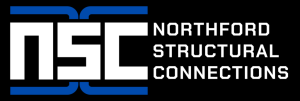

A detailed comparison of DTFC with traditional connection methods in terms of efficiency and cost.
Article Sponsored by:
Northford Structural Connections (NSC) specializes in innovative engineering solutions for enhancing the safety and durability of precast concrete structures. Their patented products, including the Double-Tee Flexible Connection (DTFC) and Double-Tee Connection Pro (DTC Pro), address critical challenges like fatigue, corrosion, and seismic resilience. With a focus on quality and longevity, NSC provides advanced connection systems trusted by industry professionals for both retrofitting and new construction projects.
As technology advances, the quest for more efficient and reliable methods of connectivity continues. Among the distinguished techniques that have emerged in the realm of connection methods is DTFC (Dynamic Time Frequency Coding). This article aims to provide a comprehensive overview of DTFC and juxtapose it with traditional connection methods, highlighting their respective pros and cons.
Dynamic Time Frequency Coding is a relatively novel approach to data transmission. It integrates time and frequency domains, optimizing the use of available bandwidth. DTFC allows greater flexibility and adaptability in connection management, making it suitable for high-demand environments. It endeavors to overcome the limitations of previous methods by enhancing the overall capacity and minimizing latency.
On the other hand, traditional connection methods like Time Division Multiple Access (TDMA) or Frequency Division Multiple Access (FDMA) have been the backbone of telecommunications for several decades. These methods allow multiple users to share the same bandwidth by dividing either time or frequency, respectively. While they have served their purpose well, they also present certain limitations.
DTFC effectively utilizes the available bandwidth. By dynamically allocating resources based on current demand, it can achieve higher data transmission rates compared to traditional methods. This characteristic leads to improved overall efficiency in communication networks.
With its dynamic nature, DTFC often results in reduced latency. The method can adapt to real-time network conditions, allowing for quicker responses. This attribute is particularly advantageous in scenarios where time-sensitive data is being transmitted.
DTFC is highly scalable. As user demand increases or fluctuates, the system can adjust accordingly without significant changes to the underlying infrastructure. This adaptability is a vital aspect of modern telecommunication systems.
The complexity of DTFC can be a double-edged sword. While it offers advanced capabilities, implementing and managing such a system can require more intricate setups and understanding compared to traditional methods.
Due to its advanced technology, the initial setup and ongoing maintenance costs associated with DTFC can be high. Organizations may need to weigh the long-term benefits against these upfront expenses.
DTFC is a newer technology, and its compatibility with existing systems can be an issue. Organizations utilizing older infrastructures may find integration challenging without significant upgrades.
Traditional connection methods are generally more straightforward to understand and implement. Their long-standing presence in the market means that many technicians are already skilled in managing these systems effectively.
With decades of use, these methods have proven their reliability in various applications. Many organizations trust traditional systems due to their historical performance under various conditions.
For many businesses, the lower initial costs of traditional connection methods make them an appealing choice. They often require less investment in new equipment and training, which can be crucial for smaller organizations.
One of the most significant drawbacks of traditional connection methods is their limited bandwidth. With a fixed allocation of resources, these methods cannot easily adapt to high-volume requests, leading to congestion during peak usage times.
In environments where user demand is high, traditional connection methods can suffer from increased latency. Users may experience delays as the system tries to juggle multiple requests sequentially.
Traditional systems are less capable of accommodating sudden changes in demand. Their rigid structure can lead to inefficiencies, which might limit performance during dynamic network conditions.
| Feature | DTFC | Traditional Connection Methods |
|---|---|---|
| Efficiency | High | Moderate |
| Latency | Low | Higher during peak |
| Scalability | Highly Scalable | Limited Scalability |
| Complexity | Complex | Straightforward |
| Cost | Higher initial costs | Lower initial costs |
When evaluating DTFC against traditional connection methods, it becomes clear that both have their merits and limitations. DTFC presents an advanced option designed to meet the needs of modern data transmission demands, especially where high efficiency and low latency are crucial. However, organizations must carefully consider the complexities and costs associated with the technology.
Traditional connection methods remain a reliable choice for many businesses due to their simplicity and proven track record. They could be more appropriate for smaller enterprises or those with less fluctuating bandwidth needs.
Ultimately, the decision between employing DTFC or traditional connection methods depends on the specific requirements and long-term goals of the organization. It is essential for stakeholders to weigh the pros and cons thoroughly before investing in a connection method that best suits their operational model.

Concrete Strength • Metal Resilience • Connecting Futures
Phone: (203) 777-0751
Email: admin@nscclips.com
News Summary During Nurses Appreciation Week, Crystal Keats, a nurse at Conway High School, is…
News Summary Coastal Carolina University has announced that in-state tuition rates will remain unchanged for…
News Summary The Ely's End of the Road Archers showcased remarkable talent at a national…
News Summary Coastal Carolina University honored Gray Bray, who served as the beloved mascot Chauncey,…
News Summary Recent drownings in Myrtle Beach have led to two separate investigations, one involving…
News Summary A 4-year-old boy named Matthew Halliday has died following a drowning incident in…